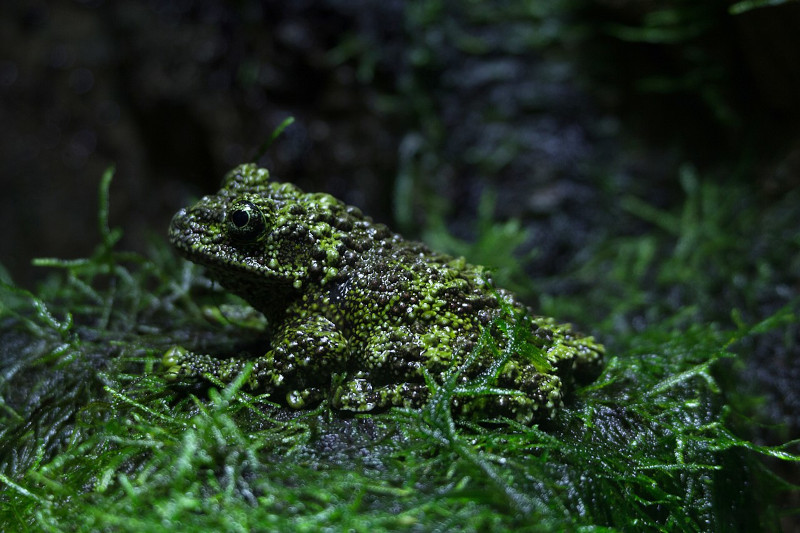
Vietnamese Mossy Frog Facts
- The simultaneously descriptive and accurate term of Vietnamese Mossy Frog serves as one of the common names for a remarkable amphibian. This marvel of Nature also goes by alternate names, though, including the mossy frog, and Tonkin bug-eyed frog.
- Its official scientific name, however, isn’t easy to pronounce. That remains that of the tongue-twisting Theloderma corticale. But by either of these names, this amazing animal represents yet another masterpiece of evolution in the minds of many people.
- Quite fortunately, this marvel of Nature appears to be maintaining a sufficient and stable population base. This further seems to hold true throughout the entirety of its natural range. Yet, while its numbers appear stable, it nonetheless has a limited range.
- But, despite the limitations this imposes, the IUCN currently list the Vietnamese Mossy Frog as Least Concern. This status appears on the organization’s Red List of Threatened Species. This presently pleasant situation remains subject to change, however.
- That’s due to the fact that it now faces several threats to its existence. Loss of habitat, due to deforestation, obviously poses a serious danger, along with the international pet trade, regrettably. Its greatest threat, though, likely consists of climate change.
Related Articles
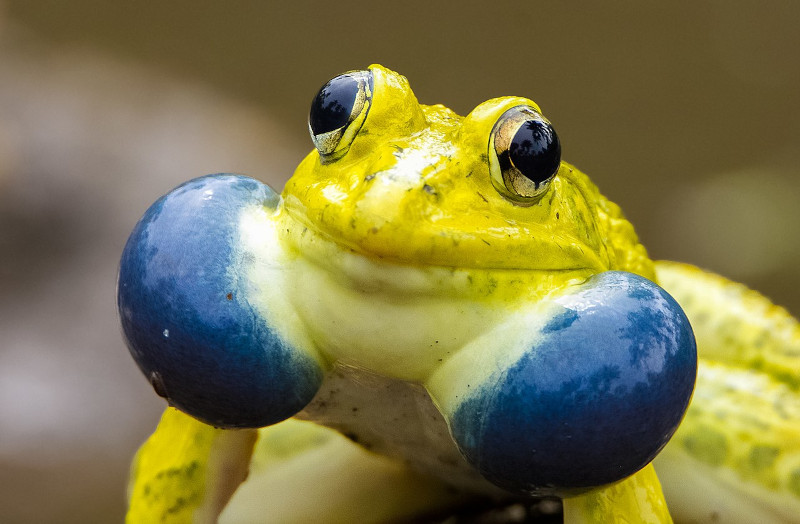
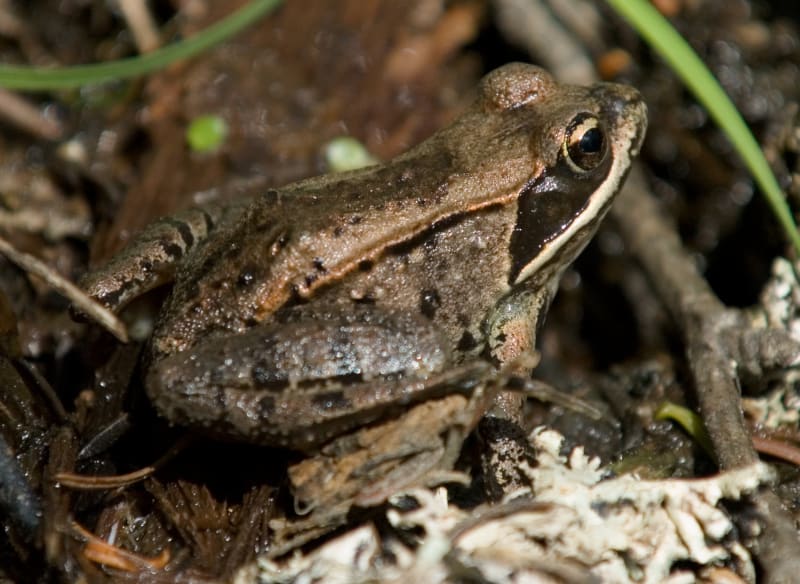
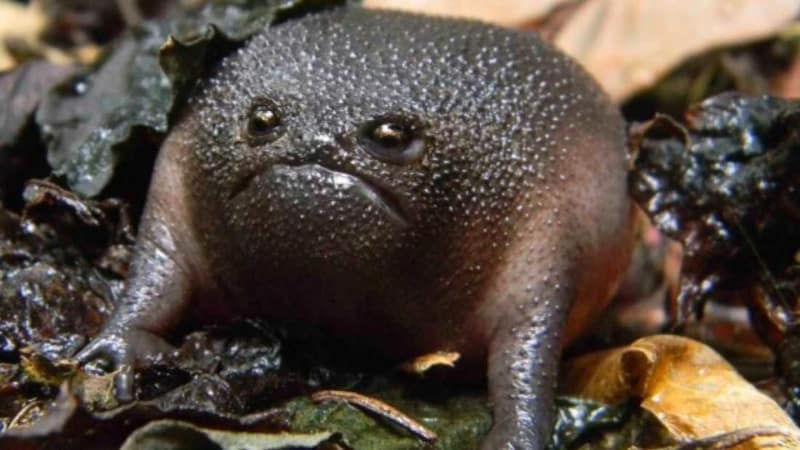
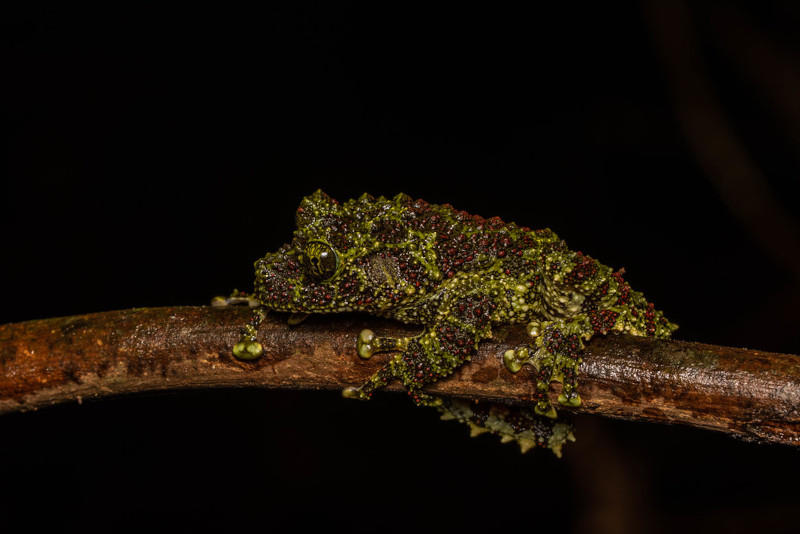
Vietnamese Mossy Frog Physical Description
The incredible Vietnamese Mossy Frog attains its relative fame due to characteristics other than its sheer size. Its most notable feature, as the name itself suggests, is the presence of a dense collection of protuberances and tubercules over most of its body.
The combined effect serves as the source of its most frequently used common name. Its coloring also plays a role in that naming, however. The skin of the creature generally shows a background of green, with various colored spots and markings added to the mix.
Such an astonishing combination of natural factors makes the animal strongly resemble a clump of moss. Given its natural habitat, this provides it with a highly effective degree of natural camouflage. In fact, it’s almost impossible to spot individuals in the wild.
But speaking purely in terms of size, the Vietnamese Mossy Frog remains an average-size amphibian. It further displays a slight degree of sexual dimorphism. Overall, it averages 3.5 in (8.9 cm) in length, with females being slightly larger than the males.
- Kingdom: Animalia
- Phylum: Chordata
- Class: Amphibia
- Order: Anura
- Family: Rhacophoridae
- Genus: Theloderma
- Species: T. corticale
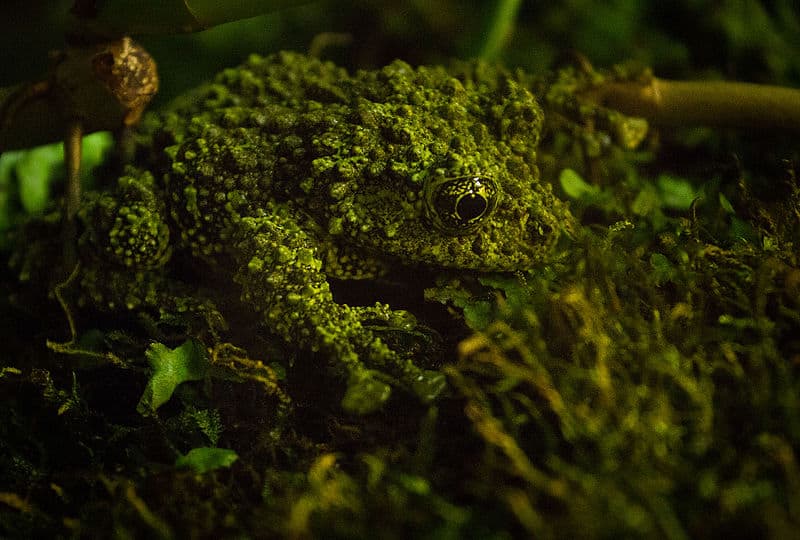
Vietnamese Mossy Frog Distribution, Habitat, and Ecology
Quite sadly for those who appreciate the wonders of Nature, the Vietnamese Mossy Frog only inhabits a small area of the world. More precisely, as the name implies, it mainly exists in the northern portions of the country of Vietnam, in Asia.
Reports of small populations in other regions also exist, though. These other regions include the province of Hainan, in China, and possibly Laos. Wherever the animal makes an appearance, though, it displays decided preferences for its choice of habitat.
Being semi-aquatic in nature, it requires a nearby source of water. But that’s only the beginning. Very specifically, the amphibian has only been seen on the banks of mountain streams, at elevations of approximately 3,000 ft (9.842 ft), or in flooded caves.
This truly fascinating animal evolved, like many of its brethren, as nocturnal in nature. It’s also fully insectivorous in its dietary habits. The frog primarily consumes larger insects, such as crickets, cockroaches, and moths, but will feed opportunistically.
The breeding patterns of the Vietnamese Mossy Frog also seems to be quite specific. This mainly takes place in partially flooded rock cavities. The female typically lays a clutch of 8 – 10 eggs, placed above the water. These generally hatch over a period of 7 – 14 days.
After hatching, the newborn instinctively quickly drop into the water below them. The ensuing metamorphosis from tadpole into frog typically requires around 3 months. The exact lifespan in the wild remains unknown, but estimates place it at 10 years.
Species Sharing Its Range
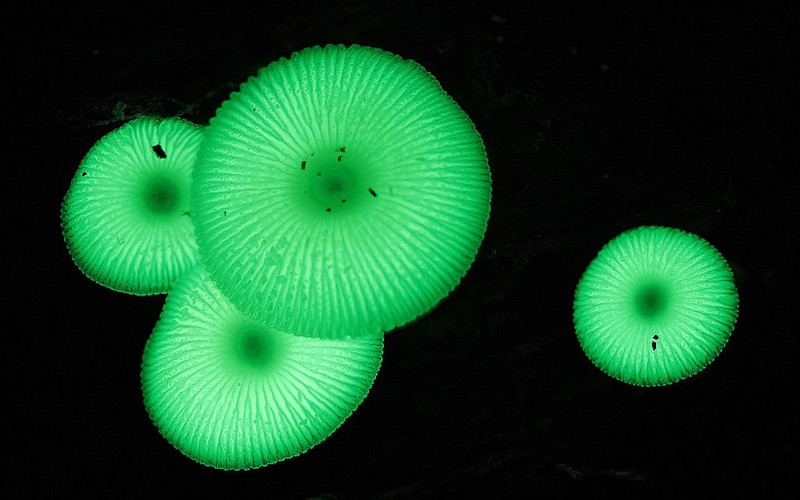
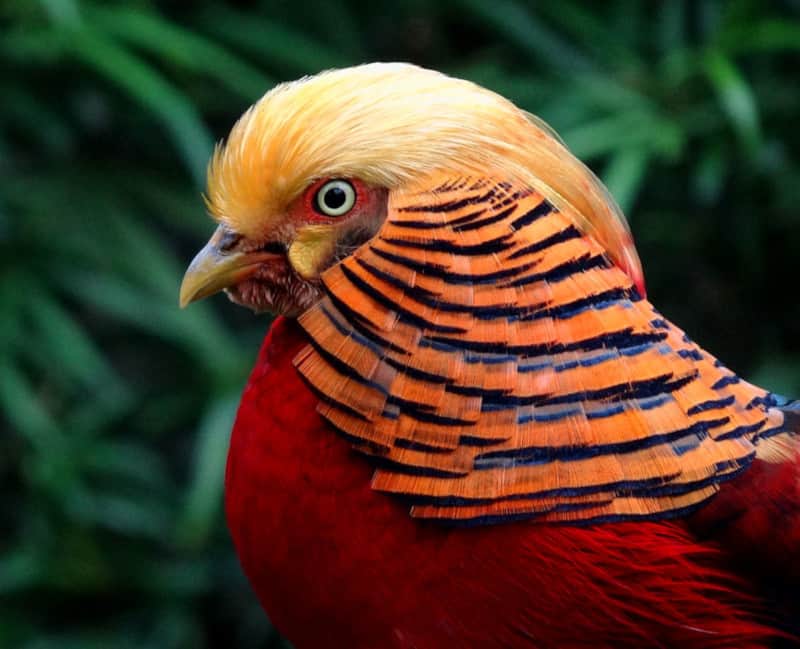
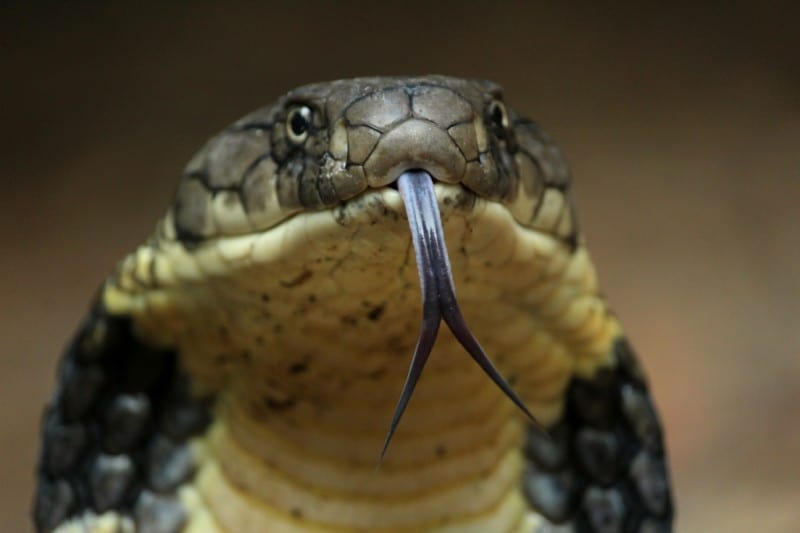
Check out our other articles on Spinetail mobula, Ol Doinyo Lengai, Happy Face Spider, Blood Falls, 7 Bizarre and Unusual Birds, Spiny Flower Mantis, East African Lowland Honey Bee









Leave a Reply